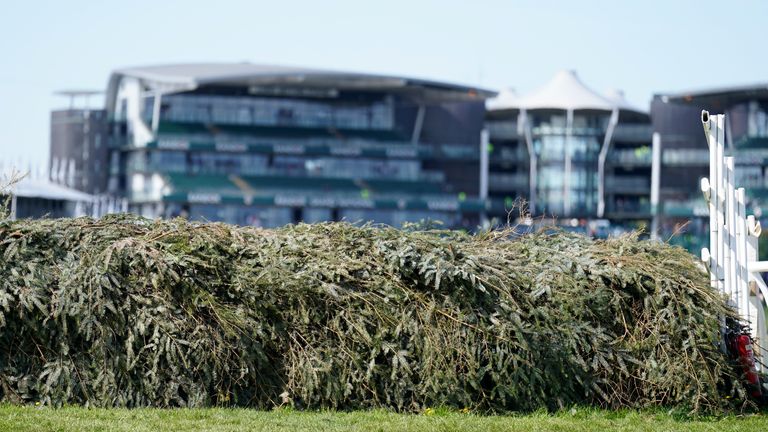Racing’s most famous contest, the Randox Grand National at Aintree, will be reduced from 40 runners to 34 from next year as part of a focus on horse welfare.
Three of this year’s Grand National field died after sustaining injuries in the race, leading to criticism from animal rights activists Animal Aid. The race was also targeted by protesters from the group Animal Rising, some of whom entered the track and caused a delay to the start time.
Following its annual review of the Grand National, The Jockey Club, which runs Aintree racecourse, has announced a series of changes, supported by the British Horseracing Authority (BHA), as part of the “continued evolution” of the race.
The headline alteration will see the maximum field size reduced for the first time since 1984, with the Jockey Club stating its aim to reduce the risk of incidents during the race.
A large amount of focus was also centred around the first fence, at which Sandy Thomson’s Hill Sixteen suffered his fatal fall, and the run from the start line.
In response, The Jockey Club will move the first obstacle 60 yards closer to the start and implement a standing start, which will apply to all races over the Grand National fences throughout the 2023-24 season.
The start time of the Grand National, typically at 5.15pm, will be brought forward to help ensure Aintree can provide optimal ground conditions and horses will no longer be led by a handler on-course during the parade in front of the grandstands.
Other safety changes include alterations to the alignment of the running rail on the inside of the course to assist with the early capture of loose horses and reducing fence 11 by two inches.
Nevin Truesdale, chief executive of The Jockey Club, said the changes to the Grand National are part of the organisation’s “relentless focus on welfare”.
He said: “I believe that a competitive, fair and safe Randox Grand National is one of the best ways of ensuring the sport continues to thrive for generations to come and remains an important part of Britain’s culture and economy.
“That means our sport, like many other sports have done, needs to recognise when action needs to be taken to evolve because the safety and care of horses and jockeys will always be our number one priority. In making these changes at Aintree we are underlining our relentless focus on welfare and our commitment to powering the future of British racing.”
Sulekha Varma, The Jockey Club’s North West head of racing and clerk of the course at Aintree, led the review process and said: “The welfare of our racehorses and jockeys is our number one priority at Aintree and we have invested significantly in equine welfare over many years.
“We continually review the Grand National and following an in-depth, evidence-based review process this year, we are announcing several changes as part of its continued evolution.”
Addressing the reduction in field size, Varma added: “We know from research papers and internal analysis of jump races that there is a direct correlation between the number of runners and the risk of falling, unseating or being brought down.
“However, we also must consider that reducing the field size by too great a number could create a faster race and have an adverse impact in terms of safety. Using the information available to us and considering the experiences of participants, our conclusion is that 34 should be the maximum number of runners in the race which we hope will result in the least number of incidents.”
On the changes to the first fence, Varma added: “Relocating the first fence will reduce the opportunity to build up too much speed on the approach and re-introducing the standing start should also help to reduce speed.”
Dual Randox Grand National-winning trainer Lucinda Russell, who saddled One For Arthur (2017) and Corach Rambler (2023) to success in the Aintree spectacular, gave her support to the changes announced.
She said: “I think these changes announced today are a clear sign again that Aintree and The Jockey Club continue to be proactive in trying to support the Grand National and the wider sport of horseracing.
“I am fully supportive of reducing the field size and I don’t feel that six fewer runners will make a difference to the heritage of the race – it can only be a good step and hopefully will help improve the start procedures.”
Russell added: “The level of welfare in racing is phenomenal and something we should be proud of. Once again Aintree is trying to make things safer.”



